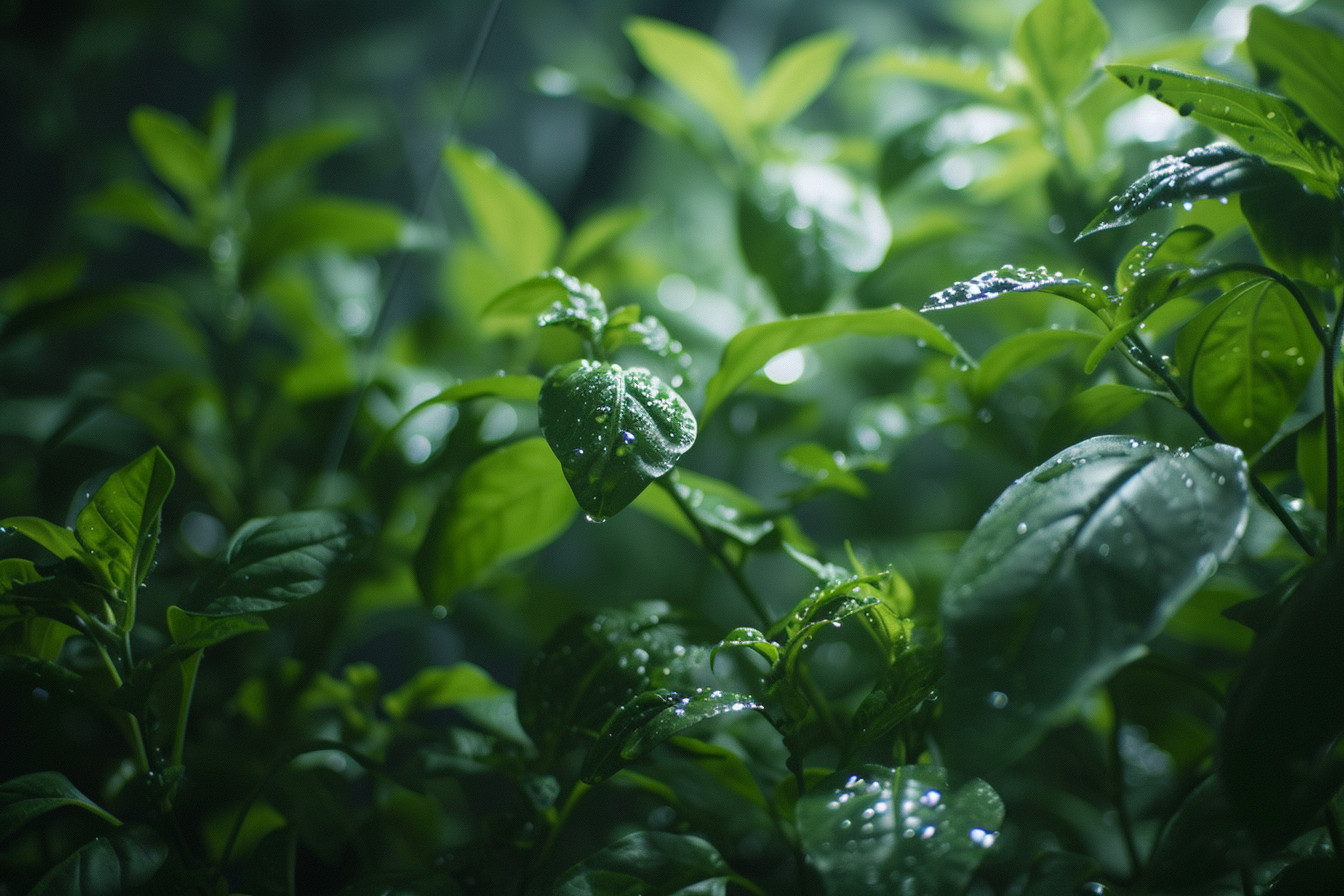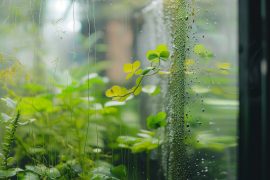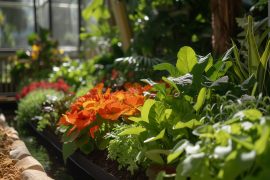So, you’ve heard about aquaponics and how it’s revolutionizing farming by combining fish culture with plant cultivation in a closed system, right? Well, let me tell you firsthand that integrating automation into this setup is not just cool; it’s transformative. It saves tons of time and effort, making the process more efficient while still allowing for that personal connection to your little ecosystem.
Imagine waking up every day to find your plants thriving without having to lift a finger to water or feed them. That’s because automated systems handle everything from water circulation within the tanks to providing nutrients derived from fish waste directly to the plants. Not only does this reduce manual labor, but it also greatly lessens the chances of human error, meaning healthier plants and happier fish.
The Benefits of Automating Your Aquaponic System
Getting an aquaponic system up and running smoothly feels like a big win. But the real game-changer? Automating it. This isn’t just about being fancy; it’s smart gardening, folks.
First off, let’s talk about time savings because we all could use more hours in our day. By automating daily tasks like feeding fish or adjusting pH levels or water temperatures, you’re not tied down to your system 24/7.
Remember when I had to cancel that weekend trip at the last minute because my setup needed babysitting? Well, with automation in place now, those days are long gone! It’s pretty liberating to know your edible garden is thriving while you’re out living life.
Then there’s consistency—the secret sauce for any successful aquaponics enthusiast (and honestly, every kind of gardener). Automation keeps things regular without clock-watching from us humans, who might forget once…or maybe twice (hey, nobody’s perfect), leading to happier plants and healthier fish over time, thanks largely to processes hitting their stride at precisely the right moments day after day.
Energy savings can’t be overlooked either, especially if eco-friendly practices spark joy within you (and me too!). Automated systems often come equipped with energy-saving features, reducing overall consumption, whether by regulating lights based on natural daylight cycles or optimizing pump speeds only as necessary, thereby cutting some costs and surprises next utility bill round.
To tie this knot tighter, think stress reduction—honestly, anything promising less worry deserves attention given how jam-packed modern lives can get?
Knowing parameters, setting alerts, and configuring digital outcomes send notifications straight to the phone. Should something go funny in business, ensuring peace of mind even in the midst of a chaotic schedule is no small feat in these harried times.
Types of Automation Systems for Aquaponics
Diving into the aquaponic world, we’re met with an incredibly soothing yet complex ecosystem that brings a sense of calm and connection to nature. Who thought fish could work alongside plants in such harmony? But let’s be honest, maintaining this delicate balance requires not just love but also time and effort. Thankfully, automation systems have stepped up as game-changers here.
One nifty piece of technology is sensor-based monitoring systems. Imagine having tiny helpers check on water pH levels or nutrient concentrations so you don’t have to stress about it every day! These smart sensors can send updates directly to your phone—”Hey there, everything’s A-OK with your leafy greens!”—or alert you when something’s off-kilter. It feels pretty amazing knowing that these silent guardians are watching over our aquatic buddies 24/7.
Then there are automated feeding mechanisms, which ensure our finned friends get their meals right on schedule without us needing to sprinkle fish food daily manually—it’s quite ingenious! This convenience means more freedom for us gardeners and happier fish, resulting in healthier plants—a win-win situation if I’ve ever seen one!
Another cool invention has been the development of climate control technologies specifically tailored for indoor aquaponics setups, such as talking heating elements during those chilly winter months or cooling fans amidst scorching summer days—all working autonomously based on real-time conditions monitored inside the system itself.
Lastly, but certainly not least, integrating all these individual bits into a centralized controller blows my mind each time—the seamless orchestration between lighting schedules adjusting automatically depending upon plant growth stages or reminders popping up telling me when it might be high time for some tank maintenance chores—is indeed nothing short of revolutionary within gardening spheres.
Choosing the Right Automation System for Your Aquaponic Setup
Deciding on an automation system for your aquaponics garden is kind of like finding a needle in a haystack. There are so many options out there, and each one seems to shout, “Pick me!” But let’s cut through that noise together.
First things first, you’ve got to figure out what exactly it is you’re automating. Are we talking about feeding fish, or are we keeping tabs on pH levels? Maybe controlling the lights has got you scratching your head. Trust me when I say that knowing precisely which tasks require automating goes miles toward making this whole process smoother than freshly churned butter.
Let’s get down to the specifics:
- Water Quality Monitoring: You want sensors that’ll keep an eye on those essential stats—think pH, ammonia levels—basically anything that could turn our aquatic buddies’ homes sour.
- Feeding Systems: If ensuring Captain Gilligan gets his grub without fail sounds appealing, then hey—you’re going to need automated feeders tailored just right for the consumption rates of your friends.
Whichever way you slice it, compatibility with your existing setup matters big time! It’d be really peachy if whatever gadgets were chosen decided they were going to play nice from day one—wouldn’t it?
Now onto something fascinating: did you know folks using smart systems often report up to 50% time savings compared to manual methods? Yeah-huh!
| Task Automated | Time saved (%) |
|---|---|
| Ammonia Level Checks | 40 |
| pH Adjustments | 35 |
| Lights Adjustment | Around 30 |
Sure as shootin’, integrating some form of digital overseer helps quell any midnight worries ’bout whether everything back at plant/fish paradise checks out alright while catchin’ zees.’
Lastly, don’t forget ‘ya personal touch—I mean cost considerations and ease-of-use stuff.’ Not everyone wants (or needs) top-tier technology resembling NASA control centers managing their leaf-and-fin oasis.
Setting Up and Installing an Automation System for Your Aquaponic System
When diving into the wonders of aquaponics, one soon realizes the peace it brings as you watch nature work its magic. But let’s be real; maintaining this balance can sometimes feel like a full-time job. That’s why automating your aquaponic system is such a game-changer! It not only saves time but also makes sure your aquatic friends and plants thrive with minimal fuss.
First things first, deciding what aspects of your setup to automate is crucial. Common automation options include feeding fish (yes, they need their meals too!), controlling water temperature, managing pH levels, and adjusting lighting schedules. Imagine never having to worry if you forgot to switch on that grow light or fret over fluctuating temperatures—sounds relieving already!
The next step involves choosing the right gear—a bit like picking tools for gardening but way cooler because we’re dealing with tech here! For each task you want automating, say goodbye to traditional timers and hello to smart sensors and controllers capable of linking directly to your smartphone app. This grants unparalleled convenience even when away from home exploring unknown lands, yet it also provides a beloved green space touch button.
- Fish Feeders:
Automated feeders release just the right amount of food, ensuring our finned pals are well-nourished without the risk of overfeeding. - Temperature Controllers:
They keep a cozy life within React swiftly to sudden changes to ensure everything stays chill—or warm, if needed! - pH Monitoring Systems:
Regularly check the acidity level and make adjustments. A happy range means thriving veggies and aquatic partners alike.
Monitoring and Controlling Your Aquaponic System Remotely
Ever thought about managing your aquaponics system from the comfort of your couch or even when you’re miles away? Welcome to the era where technology meets traditional gardening, making life simpler for enthusiasts like us. By integrating remote monitoring and control systems into our aquaponic setups, we not only save time but also ensure that our green friends are thriving.
Imagine getting real-time notifications on water temperature, pH levels, nutrient concentrations, and more straight to your phone. This isn’t just a convenience; it’s revolutionizing how we interact with nature. With sensors placed in critical areas of an aquaponic ecosystem feeding data back through IoT (Internet of Things) devices, I’ve been able to take preemptive action before small issues become big problems.
Let me share a quick anecdote: There was this one time when my system alerted me about dropping temperatures way before those could affect my fish adversely. Just by clicking a button on my smartphone app connected via Wi-Fi, voila! The heater kicked in without needing any physical intervention from yours truly.
Here’s another cool part: automated feeders synced up as part of these smart automation tools mean no hungry mouths left waiting because you got stuck at work late or decided impromptu weekend getaways were much-needed self-care moments, which honestly is awesome!
To give y’all some actual numbers showing why this tech-savvy approach rocks:
| Feature | Benefit |
|---|---|
| Real-Time Alerts | Prevent potential disasters. |
| Remote Adjustments | Optimize conditions any place, anytime. |
Beyond turning manual tasks into digital pushing buttons, instead of hand-draining tanks, automatic valves have introduced predictability and peace of mind, knowing there is really someone looking out for the garden, albeit digitally.
Saving Time and Effort with Automated Maintenance Tasks
Gone are the days when maintaining an aquaponic system meant endless hours of manual labor. Automation’s taking over, folks! It’s like having your own gardening butler that never gets tired or asks for a day off. Let me break it down for you.
First up, we’ve got automated feeding systems. These little gems ensure your fish get their meals on time every single time—no more rushing home because you forgot to feed them in the morning. But how much does this automation affect growth rates? Studies have shown that consistent and precise feeding can improve fish growth by up to 25%. That’s not just saving time; it’s making sure our aquatic friends thrive!
| Benefits | Improvement Rate |
|---|---|
| Fish Growth | Up to 25% |
Next in line is water quality management—basically, the heart of any successful aquaponic setup. I installed sensors that monitor everything from pH levels to ammonia content, automatically adjusting conditions as needed through connected devices such as pumps or aerators. This isn’t just convenient; it significantly reduces the risks associated with human error, which, trust me, has saved my tank more than once.
- Automated Feeders: Ensure timely feeding.
- Water Quality Sensors: Monitor critical parameters round-the-clock.
Finally, talking convenience and cost reduction, here guys, automatic lighting cycle adjustments mimic natural daylight patterns, providing optimal growing conditions year-round while cutting energy bills. Half who wouldn’t love a bit of extra cash spent, especially those late-night online shopping sprees?
How Automation Can Improve the Health and Growth of Your Aquaponic Plants
Diving into aquaponics, you quickly learn it’s a blend of art and science—like painting with water but in ways that also feed your soul and belly. One day, I stumbled upon this fascinating intersection between technology and traditional gardening: automation in aquaponics. It sounded almost like having a garden on auto-pilot! This got me thinking: How could hooking up my plants to gadgets improve their health?
First off, let’s talk about precision feeding because, honestly, who hasn’t overfed or underfed their plants at some point? Automated systems can deliver just the right amount of nutrients based on real-time data from sensors monitoring everything important—water temperature, pH levels, nutrient concentrations—you name it. Imagine never again accidentally messing up your plant’s diet!
Now consider the peace provided by automated lighting timers; they’re game changers, especially if you are forgetful like I am. My green friends get exactly 12 hours of sunlight, no matter what life throws at me. And here’s an interesting tidbit: consistent light exposure has been linked to significant improvements in plant growth, including faster maturation rates. Who knew, right
Water circulation is another area where letting computers take control does wonders. Aerators, pumps, and even fish feeders can operate autonomously, ensuring oxygen-rich water circulates properly among roots night and day. The result is healthier root systems, better growth, and less work for yours, truly saving you countless evening strolls checking on every little bubbler pump.
Lastly, environmental controls have revolutionized indoor gardens. These smart devices adjust humidity, VPD (vapor pressure deficit), and CO2 levels, keeping those parameters ideal around the clock. Yes, there was initial setup measuring and tweaking, but now simply sitting back and watching a thriving ecosystem balance itself well most days feels nothing short of amazing. Also, sleep quality dramatically improved when I stopped getting the middle-night panic, “Did it turn dehumidifier?”
Incorporating these tech-savvy tools not only elevates overall wellness within our watery edens, easing the burden of physical labor and offering insights that enable more precise care than ever before, technology assuredly presents a formidable ally quest producing bountiful healthy harvests while fostering deeper connection with the natural world without compromising the tranquility inherent in moments spent amid nature.
Increasing Efficiency and Productivity with Automated Feeding and Watering
Automated feeding and watering systems are a game changer in the world of aquaponics, transforming it from an intensive hands-on activity to something somewhat more serene. Picture this: instead of daily manual labor involving measuring feed amounts or assiduously testing water levels, automated solutions take care of these tasks like clockwork.
- Why automation matters: It’s not just about saving precious minutes each day; automating critical aspects like feeding fish precisely and maintaining optimal water conditions ensures your plants thrive without constant intervention. You could literally be sleeping or enjoying that book you’ve been meaning to read for months while pumps run quietly in harmony.
Implementing feeds through timers can notably improve plant growth rates because they introduce nutrients at regular intervals ideal for uptake by roots—picture those moments right before dawn breaks when nature itself awakens hungriest! There’s peace found even within mechanical sounds if one listens closely enough amidst whispered conversations between leaves under LED grow lights designed specifically for different stages of vegetation.
One might wonder how efficient these systems really are. Let me throw some numbers into the mix:
| Item | Improvement Rate |
|---|---|
| Fish Growth | Up to 20% faster |
| Plant Yield | Increase by 25%–30% |
In real terms? That means healthier produce on your plate sooner than traditionally grown alternatives, plus extra crops per year, thanks solely to controlled environments where every drop counts!
Now I’ve seen firsthand what can happen when technology meets tradition:
I once helped set up such a system in my friend Sarah’s backyard—an oasis filled with leafy greens swaying gently above swirling waters teeming with friendly koi who didn’t seem to mind their part in our food chain whatsoever—and witnessed nearly immediate impacts as lettuces seemed to burst forth as though urging us towards earlier harvests than anticipated!
Whether we’re looking purely from efficiency angles or imbuing everyday gardening practices with rhythmical ease offered via automation, it stands clear there exists immense potential uplifting both productivity gains and enriching experiences connecting humans deeply rooted traditions cultivating life sustainably beneath fingernails testament dedication themes resonate across centuries evolving to adapt innovative times ahead.
Troubleshooting Common Issues with Automated Aquaponic Systems
Diving into the world of aquaponics can feel like you’re stepping onto another planet. Suddenly, you’re not just gardening; you’ve become part caretaker and part technician in this symbiotic universe where fish and plants thrive together. It’s fascinating but comes with its share of challenges, especially when we introduce automation to save time and effort.
First things first, let’s tackle one issue that seems universal: sensor malfunctions. These handy gadgets are supposed to be our eyes within the system—monitoring pH levels, water temperature., nutrient density—you name it! Yet they can sometimes give us a bit more headache than help if they start acting up or giving inaccurate readings. Regular calibration is key here. You wouldn’t believe how many times I thought my system went haywire only to find out a sensor needed recalibrating!
Water flow issues are right at the top of the list too. A pump failure will knock your whole setup off-kilter faster than anything else. Not enough water movement? Plants suffer because nutrients aren’t evenly distributed. Too much?. And those roots might get battered by an unstoppable torrent. Instead of keeping an eye on digital readouts, performing manual checks helps keep everything balanced.
Then there’s algae growth. Algae adore sunlight as do most living beings, but unlike our leafy friends who play nice in the vanishing act once submerged underwater (thanks to oxygen exchange!), algae see the sun as “go-time.” Blocking pipes, disrupting equipment, even shading out plant life, and reducing photosynthesis rates The answer isn’t blocking every last ray of sunshine from hitting tank surfaces, though: strategic placement of shade cloths and a decent amount of diligent cleaning sweep away excess light-hungry pests before they cause serious havoc.
One story sticks with me about unexpected heroism in facing adversity. My colleague experienced a sudden drop in her fish population overnight. Panic set well, and it was clear something amiss. After scrutinizing potential culprits, the air pump had given off a ghostly appearance without warning, leaving beloved aquatic inhabitants gasping for breath. A quick trip to the local aquarium store swap later, the ecosystem was back on track. That tale serves as a reminder of the importance of redundancy to backup these crucial components. Your precious cargo depends on them.
Final Thought
This is the wrap-up section, but let me tell you, it’s been quite a journey diving deep into aquaponic system automation. I’ve learned a ton, and hopefully, so have you.
Stepping back to look at the big picture, automating an aquaponic system isn’t just about cutting down on daily chores or saving time—though those are great perks! It’s more than that. Automation connects us closer to nature in ways we often overlook.
- Ease of Use: Setting up sensors and timers might sound daunting at first glance, but trust me when I say this: they’re game changers.
- Data Insights: Keeping track of pH levels, water temperature, and nutrient concentrations manually sounds like something out of medieval times now that automated systems can handle all these tasks with precision accuracy without breaking a sweat!
I’ve seen some impressive setups over my gardening years where folks had their entire operation managed from their smartphones—talking high-tech green thumbs here!







